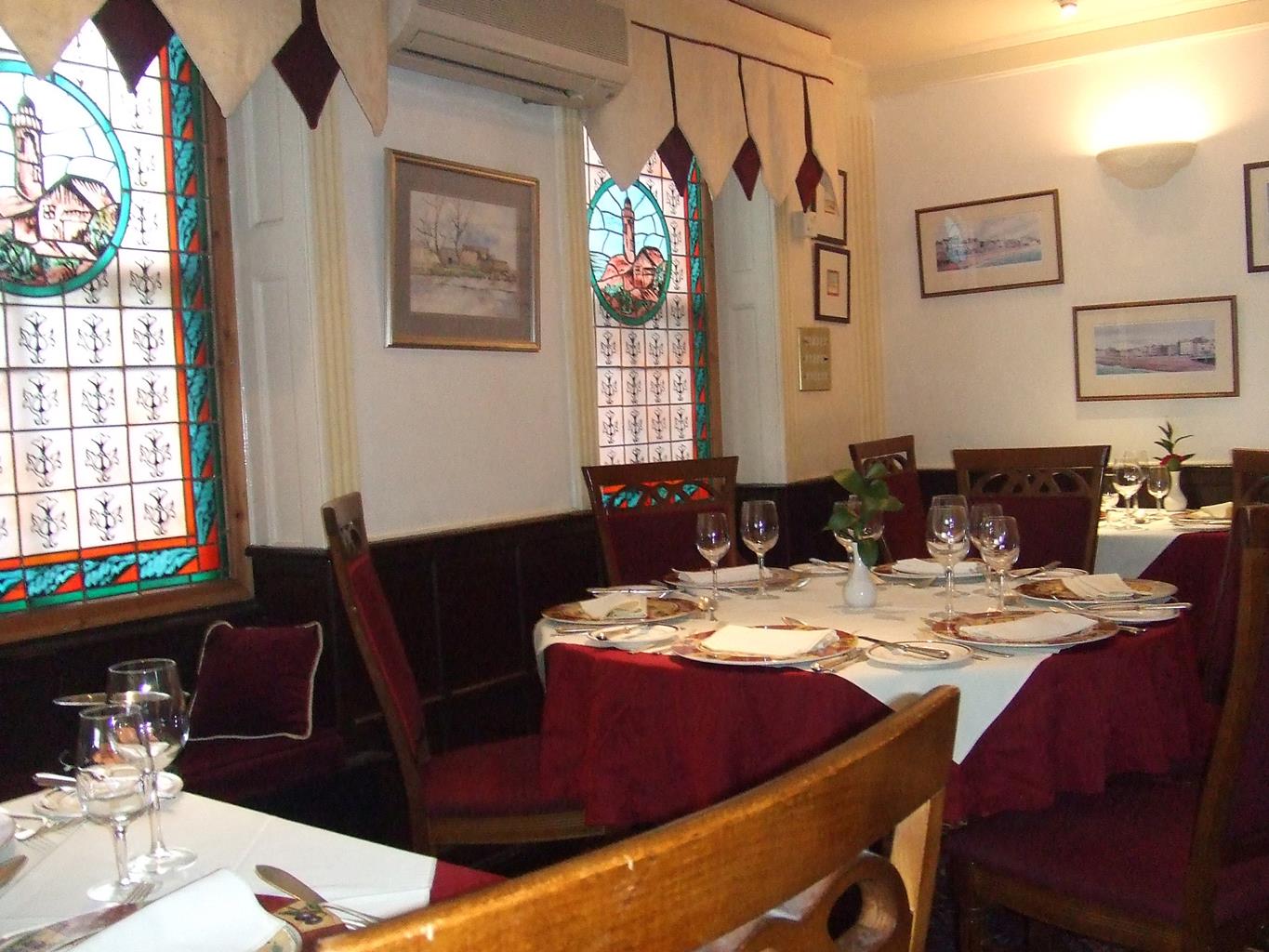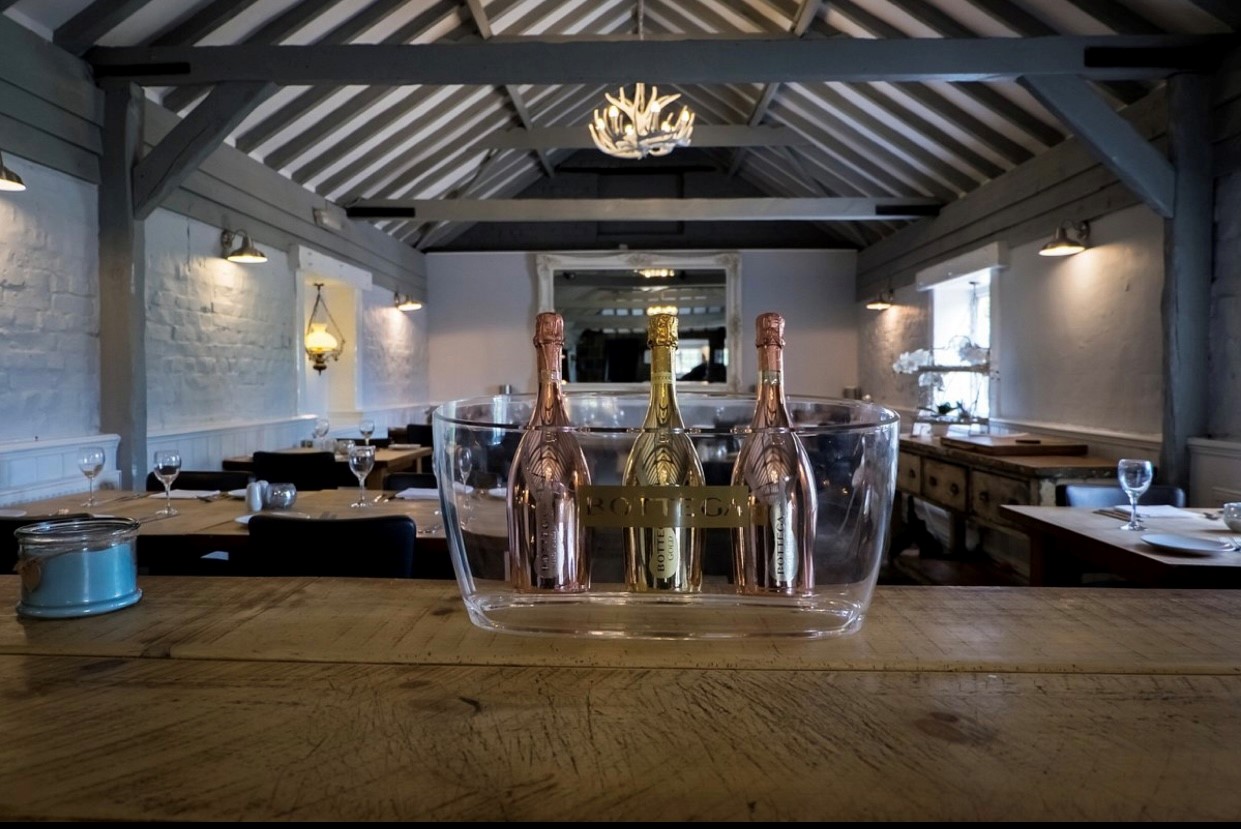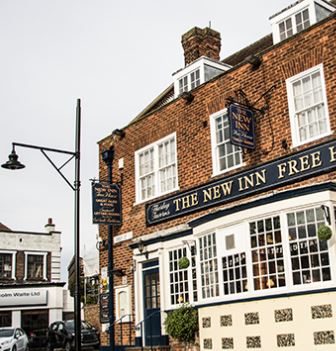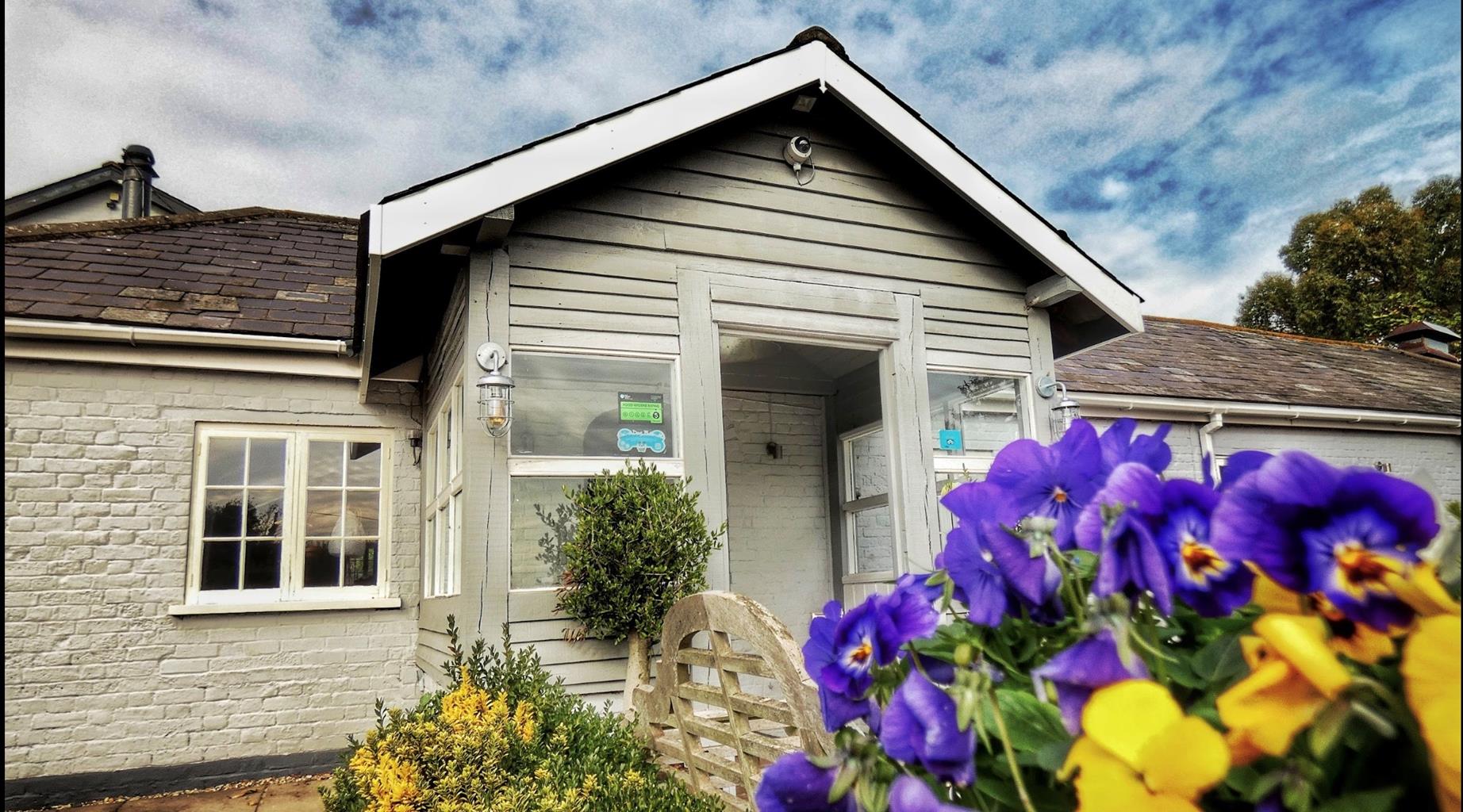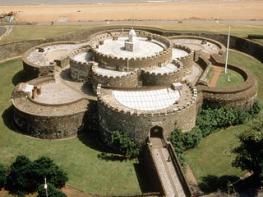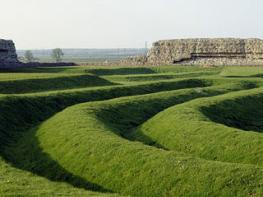Dunkerleys Hotel is located on the seafront, and offers bedrooms furnished to a high standard…
Exploring Old Deal

Discover a haven without a harbour on a treacherous bit of coast.
3.25 miles (5.2kms)
About the walk
Adjuvate Advenas, or ‘Befriend the stranger’ is the welcoming motto of this little seaside town. Its central streets are full of character, a rare survival of an intact Georgian townscape. Middle Street is the most charming and best preserved of Deal’s old streets, and was Kent’s first-ever conservation area. The Georgian houses in this part of town are now carefully gentrified and much sought after. Many would have been the homes of humble boatmen, others the grander houses of wealthy merchants or naval officers.
A bird’s-eye view shows the perfect Tudor rose design of this fortress – an appropriate shape for a castle built by Henry VIII to counter the threat of invasion from Catholic Europe. Deal is the largest and most elaborate of a tripartite series of forts along this stretch of coast (others were built at Walmer and Sandown). Its flat-roofed central tower and surrounding bastions were all heavily armed with the latest artillery.
These defences were never put to the test in Tudor times – presumably their very existence was deterrent enough. It wasn’t until the Civil War that the castle finally came under siege. By the end of the Napoleonic Wars, Deal castle had had its day as a defensive site, but it served as a military residence until World War II. Look upwards as you approach the main entrance, to see five ‘murder holes’ in the roof, designed for pouring boiling oil or quicklime on any potential intruders.
Like most of Britain’s seaside piers, those built at Deal have taken a pounding from storms and shipping collisions. The first version was only half the intended size, after the construction company ran out of cash and had to stop at 250ft (76m). The previous Victorian pier was demolished during World War II (a Dutch merchant vessel crashed into it after being struck by a drifting mine in 1940). The present structure dates from the 1950s and has recently had an expensive facelift. A stroll down the pier gives a fine panorama of Deal’s seafront. It’s a great spot for sea fishing; keen anglers brave the elements along its length in hopes of a catch.
Walk directions
After visiting the castle, head towards the seafront, noticing the fishing boats pulled up on the beach. Turn left along Prince of Wales Terrace, the seafront extension of Victoria Town, a smart residential area of large 19th-century villas built on the site of the old Naval Yard, to your left. A few blocks further along the seafront stands the four-storey Time Ball Tower.
Turn right along the pier and walk to the end for a fine view, then return to the seafront and continue along the promenade (part of the Saxon Shore Way). Nelson caused a frightful scandal when he brought his mistress Emma Hamilton to The Royal Hotel on Beach Street in 1801.
Carry on up the seafront as far as Dolphin Street, then turn left to reach Alfred Square a block inland. The press gang operated here, and smugglers’ hiding places are still being found in local houses.
Turn left down Middle Street. Glance right and left down all the side streets, where cobbled courts and passageways create a maze of intimate views, and terraces of tightly packed houses crowd the narrow pavements.
Turn right when you reach King Street and walk up to the High Street. Turn right and walk past the parish church of St George, where many naval officers worshipped during the Napoleonic Wars, including Nelson. Beyond it stand the town hall (now the tourist office), Miretti's and the community arts Landmark Centre. Turn left here up Union Road, left again on West Street and complete the block left again down St George’s Road, where you will pass the Maritime and Local History Museum on your left.
Return to the High Street and retrace your steps to King Street, then continue along the High Street. Turn left down South Street to admire a pretty pink-washed house; a plaque explains that from 1762 until her death in 1806, this was the home of Elizabeth Carter, a scholarly woman who became a close friend of Dr Johnson.
Walk down Victoria Road past the inland side of Deal Castle. Turn half-right up Gladstone Road, left down North Barrack Road and left again along the Strand to admire some of the fine old barracks buildings here (now converted into elegant housing). Return to your starting point.
Additional information
Town streets (some busy, others narrow), a pier and paved esplanades
Georgian townscape with Tudor castle, lining a shingle seafront
A town walk so not ideal; keep on lead except on beach
OS Explorer 150 Canterbury & the Isle of Thanet
Streetside parking near Deal Castle (free of charge on Marine Road)
Marine Road (by the paddling pool), the far end of the pier, bus station and other central locations
WALKING IN SAFETY
Read our tips to look after yourself and the environment when following this walk.
Find out more
Also in the area
About the area
Discover Kent
The White Cliffs of Dover are an English icon – the epitome of our island heritage and sense of nationhood. They also mark the point where the Kent Downs AONB, that great arc of chalk downland stretching from the Surrey Hills and sometimes known as ‘the Garden of England’, finally reaches the sea. This is a well-ordered and settled landscape, where chalk and greensand escarpments look down into the wooded Weald to the south.
Many historic parklands, including Knole Park and Sir Winston Churchill’s red-brick former home at Chartwell, are also worth visiting. Attractive settlements such as Charing, site of Archbishop Cranmer’s Tudor palace, and Chilham, with its magnificent half-timbered buildings and 17th-century castle built on a Norman site, can be found on the Pilgrim’s Way, the traditional route for Canterbury-bound pilgrims in the Middle Ages.
In the nature reserves, such as the traditionally coppiced woodlands of Denge Wood and Earley Wood, and the ancient fine chalk woodland of Yockletts Bank high on the North Downs near Ashford, it is still possible to experience the atmosphere of wilderness that must have been felt by the earliest travellers along this ancient ridgeway.
Nearby stays
Restaurants and Pubs
Nearby experiences
Recommended things to do
Why choose Rated Trips?
Your trusted guide to rated places across the UK
The best coverage
Discover more than 15,000 professionally rated places to stay, eat and visit from across the UK and Ireland.
Quality assured
Choose a place to stay safe in the knowledge that it has been expertly assessed by trained assessors.
Plan your next trip
Search by location or the type of place you're visiting to find your next ideal holiday experience.
Travel inspiration
Read our articles, city guides and recommended things to do for inspiration. We're here to help you explore the UK.

